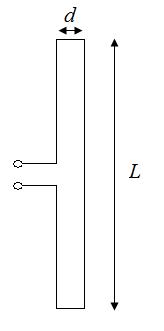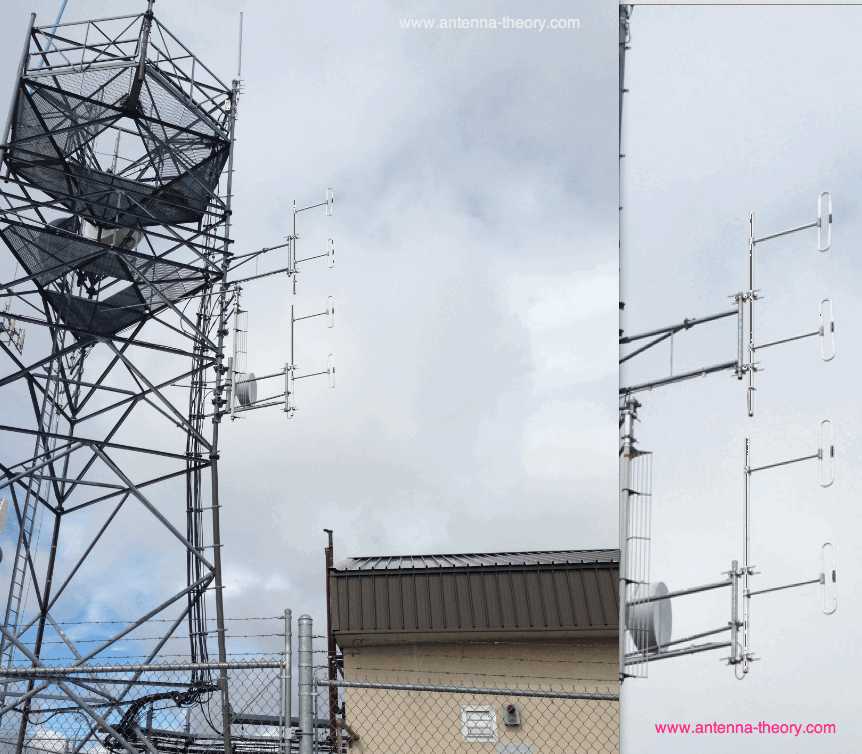The Folded Dipole Antenna
|
A folded dipole is a dipole antenna with the ends folded back around and connected to each other, forming a loop as shown in Figure 1.
 Figure 1. A Folded Dipole Antenna of length L.
Typically, the width d of the folded dipole antenna is much smaller than the length L.
Because the folded dipole forms a closed loop, one might expect the input impedance to depend on the input impedance of a short-circuited transmission line of length L. However, you can imagine the folded dipole antenna as two parallel short-circuited transmission lines of length L/2 (separated at the midpoint by the feed in Figure 1). It turns out the impedance of the folded dipole antenna will be a function of the impedance of a transmission line of length L/2.
Also, because the folded dipole is "folded" back on itself, the currents can reinforce each other instead of cancelling each other out, so the input impedance will also depend on the impedance of a dipole antenna of length L.
Letting Zd represent the impedance of a dipole antenna of length L and Zt represent the impedance of a transmission line impedance of length L/2, which is given by:

The input impedance ZA of the folded dipole is given by:
The folded dipole antenna is
resonant
and radiates well at odd integer multiples of a
half-wavelength (0.5
The folded dipole antenna can be made resonant at even multiples of a half-wavelength
( 1.0
Half-Wavelength Folded DipoleThe antenna impedance for a half-wavelength folded dipole antenna can be found from the above equation for ZA; the result is ZA=4*Zd. At resonance, the impedance of a half-wave dipole antenna is approximately 70 Ohms, so that the input impedance for a half-wave folded dipole antenna is roughly 280 Ohms.
Because the characteristic impedance of twin-lead transmission lines are roughly 300 Ohms, the folded dipole is often used when connecting to this type of line, for optimal power transfer. Hence, the half-wavelength folded dipole antenna is often used when larger antenna impedances (>100 Ohms) are needed.
The radiation pattern of half-wavelength folded dipoles have the same form as that of half-wavelength dipoles. The picture below shows four vertically-polarized folded dipole antennas on the side of a communications tower on the top of badger mountain in Washington State:  Figure 2. Four Folded Dipole Antennas on a Communications Tower. It looks like the length L of each folded dipole is somewhere between 0.5-1 meter, so that the total loop length is about 1-2 meters. Hence, we can estimate that these antennas are designed to operate at a wavelength of about 1-2 meters, and therefore radiate at a frequency of c/lambda=(3e8/2)=150 MHz to c/lambda=(3e8/1)=300 MHz.
|

 ,
1.5
,
1.5